-
 Bitcoin
Bitcoin $114800
-3.31% -
 Ethereum
Ethereum $3641
-5.84% -
 XRP
XRP $2.948
-6.36% -
 Tether USDt
Tether USDt $0.9998
-0.03% -
 BNB
BNB $772.4
-3.97% -
 Solana
Solana $169.1
-6.68% -
 USDC
USDC $0.9999
-0.01% -
 Dogecoin
Dogecoin $0.2056
-8.09% -
 TRON
TRON $0.3247
-0.18% -
 Cardano
Cardano $0.7239
-7.43% -
 Hyperliquid
Hyperliquid $39.71
-8.60% -
 Stellar
Stellar $0.3912
-7.84% -
 Sui
Sui $3.510
-10.17% -
 Chainlink
Chainlink $16.59
-8.03% -
 Bitcoin Cash
Bitcoin Cash $560.5
-3.65% -
 Hedera
Hedera $0.2464
-10.08% -
 Avalanche
Avalanche $22.03
-7.87% -
 Ethena USDe
Ethena USDe $1.001
-0.02% -
 UNUS SED LEO
UNUS SED LEO $8.947
0.21% -
 Toncoin
Toncoin $3.389
-2.58% -
 Litecoin
Litecoin $104.9
-5.23% -
 Shiba Inu
Shiba Inu $0.00001220
-6.67% -
 Polkadot
Polkadot $3.652
-6.10% -
 Uniswap
Uniswap $9.213
-9.05% -
 Monero
Monero $307.2
-2.93% -
 Dai
Dai $0.9998
-0.02% -
 Bitget Token
Bitget Token $4.367
-2.89% -
 Cronos
Cronos $0.1374
-6.80% -
 Pepe
Pepe $0.00001056
-8.65% -
 Aave
Aave $257.3
-7.31%
How to use the EMA as a dynamic trend line?
The EMA acts as a dynamic trend line, offering real-time support in uptrends and resistance in downtrends, making it a valuable tool for identifying and trading with momentum.
Jul 30, 2025 at 08:30 pm
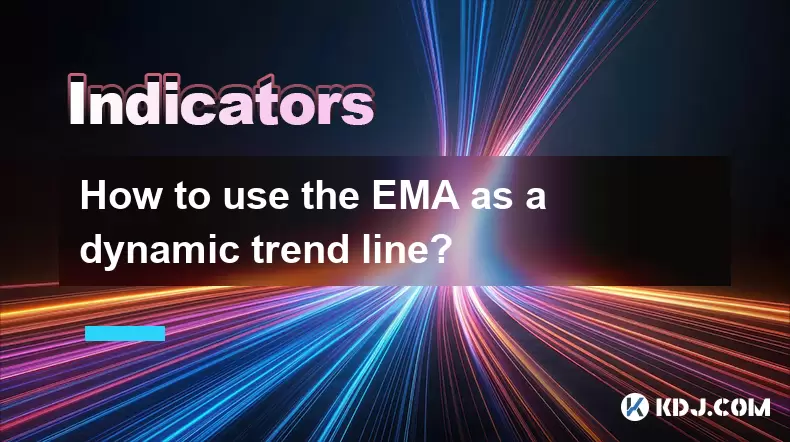
Understanding the EMA and Its Role in Trend Identification
The Exponential Moving Average (EMA) is a type of moving average that places greater weight on recent price data, making it more responsive to new information compared to the Simple Moving Average (SMA). This responsiveness allows the EMA to act as a dynamic trend line, adjusting in real time to reflect the current market direction. Traders use EMAs to identify trend direction, confirm momentum, and determine potential support and resistance levels. Because the EMA recalculates with every new candle, it adapts to price action, making it ideal for dynamic use in trending markets.
When applied to a chart, the EMA can serve as a visual guide that moves with the price. For instance, in an uptrend, the price tends to stay above the EMA, using it as a support level. Conversely, in a downtrend, the price remains below the EMA, treating it as resistance. This behavior allows traders to use the EMA not just as a lagging indicator, but as a real-time trend filter.
Selecting the Right EMA Period for Dynamic Use
Choosing the appropriate EMA period is crucial when using it as a dynamic trend line. Common periods include the 9-period, 20-period, and 50-period EMA, each serving different timeframes and trading styles. Shorter periods like the 9 EMA react quickly to price changes, making them suitable for scalping or short-term trend identification. Longer periods like the 50 EMA offer smoother lines and are better for identifying major trends on higher timeframes.
To determine the best EMA for your strategy:
- Open your preferred charting platform (e.g., TradingView, MetaTrader).
- Apply the EMA indicator from the indicators menu.
- Test different periods by adjusting the length input.
- Observe how each EMA interacts with price: does it consistently act as support/resistance?
- Choose the period that best aligns with the asset’s volatility and your trading timeframe.
For example, in a 1-hour BTC/USDT chart, the 20 EMA might consistently act as dynamic support during an uptrend, while in a daily ETH/USD chart, the 50 EMA may provide clearer trend signals.
Using EMA as a Dynamic Support and Resistance Line
One of the most effective ways to use the EMA is to treat it as a dynamic support or resistance level. Unlike static horizontal lines, the EMA moves with the market, offering real-time reference points. When the price approaches the EMA during a trend, it often bounces off it, confirming the trend’s strength.
To trade using this concept:
- Identify a clear trend (up or down) on your chart.
- Ensure the price is consistently respecting the EMA (e.g., bouncing off it in an uptrend).
- Wait for a pullback toward the EMA.
- Look for bullish candlestick patterns (like hammer or engulfing) near the EMA in an uptrend.
- Enter a long position with a stop-loss placed just below the EMA.
- In a downtrend, look for bearish reversal patterns near the EMA and enter short positions.
This method works best when combined with volume analysis—increasing volume on the bounce enhances the validity of the signal.
Combining Multiple EMAs for Confirmation
Using a single EMA can generate false signals, especially in choppy or sideways markets. To improve accuracy, traders often use multiple EMAs together to confirm trend direction. A popular configuration is the EMA crossover system, such as the 9 and 21 EMA combination.
To set up a dual EMA system:
- Add both the 9 EMA and 21 EMA to your chart.
- When the 9 EMA crosses above the 21 EMA, it signals a potential bullish trend.
- When the 9 EMA crosses below the 21 EMA, it indicates a bearish trend.
- Use the 21 EMA as the dynamic trend line—price above it confirms uptrend, below confirms downtrend.
- Only take trades in the direction of the longer EMA when the shorter one aligns.
This layered approach reduces noise and increases confidence in trend identification. For example, in a 4-hour SOL/USDT chart, if the 9 EMA is above the 21 EMA and price is holding above the 21 EMA, each retest of the 21 EMA becomes a potential entry zone.
Adjusting EMA Settings Based on Market Volatility
Market conditions change, and a fixed EMA period may not always perform optimally. During high volatility, shorter EMAs may whipsaw, while longer ones may lag excessively. To maintain effectiveness:
- Monitor the Average True Range (ATR) to assess current volatility.
- In high volatility, consider using a slightly longer EMA (e.g., switch from 20 to 25) to filter out noise.
- In low volatility, revert to a shorter EMA for quicker signals.
- Re-optimize EMA periods every few weeks or after major price events (e.g., halvings, forks).
Some traders use adaptive moving averages that automatically adjust based on volatility, but manually tuning the EMA ensures better control over strategy parameters.
Practical Example: Trading with EMA on a Crypto Chart
Let’s walk through a real-world application on a 1-hour Binance Coin (BNB/USDT) chart:
- Apply the 20 EMA to the chart.
- Observe that price has been making higher lows and staying above the 20 EMA.
- After a small pullback, price touches the 20 EMA and forms a bullish engulfing candle.
- Volume increases on the upward move following the touch.
- Place a buy order at the close of the engulfing candle.
- Set stop-loss just below the recent swing low near the EMA.
- Set take-profit at the next resistance level or use a trailing stop aligned with the EMA.
This setup uses the 20 EMA as dynamic support, combining price action, volume, and trend continuity for a high-probability trade.
Frequently Asked Questions
Q: Can the EMA be used on all cryptocurrency timeframes?
Yes, the EMA is effective across all timeframes—from 1-minute scalping charts to weekly swing trading setups. The key is selecting a period that matches the timeframe. For example, a 9 EMA works well on 5-minute charts, while a 50 EMA is more suitable for daily charts.
Q: What happens when price crosses the EMA but doesn’t reverse?
This is known as a false breakout. It often occurs during consolidation or news events. To reduce risk, wait for confirmation—such as a close beyond the EMA and a follow-through candle—before acting on the cross.
Q: Is the EMA more reliable for certain cryptocurrencies?
The EMA performs best on high-liquidity assets like Bitcoin and Ethereum due to smoother price action. Low-cap altcoins with erratic movements may generate misleading signals, so use tighter risk management or avoid EMA-based strategies on them.
Q: How do I know if the EMA is acting as support or resistance?
Observe at least three touchpoints where price reacts to the EMA. If price bounces off it repeatedly in the same direction, it confirms its role. A single touch is not enough to establish reliability.
Disclaimer:info@kdj.com
The information provided is not trading advice. kdj.com does not assume any responsibility for any investments made based on the information provided in this article. Cryptocurrencies are highly volatile and it is highly recommended that you invest with caution after thorough research!
If you believe that the content used on this website infringes your copyright, please contact us immediately (info@kdj.com) and we will delete it promptly.
- Bitcoin, Ethereum, and Investor Behavior: A New York Minute on Crypto Trends
- 2025-08-01 15:10:12
- Tether's Q2 Triumph: USDT Supply Soars Amidst Profit Surge!
- 2025-08-01 15:10:12
- Ethereum ETF Holdings: A Corporate Treasury Revolution?
- 2025-08-01 15:30:12
- Ethereum's Wild Ride: Funding Rates, Price Drops, and Retail to the Rescue!
- 2025-08-01 15:30:12
- Ethereum Under Pressure: Crypto Market Drop Explained
- 2025-08-01 15:35:11
- Ethereum ETF Mania: Inflows Surge, Market Rises, What's Next?
- 2025-08-01 15:35:11
Related knowledge

What is the difference in KDJ signal interpretation between a trending and a ranging market?
Aug 01,2025 at 03:56pm
Understanding the KDJ Indicator in Cryptocurrency TradingThe KDJ indicator is a momentum oscillator widely used in cryptocurrency trading to identify ...

Does the KDJ indicator work well for low-liquidity crypto assets?
Aug 01,2025 at 02:01pm
Understanding the KDJ Indicator in Cryptocurrency TradingThe KDJ indicator is a momentum oscillator derived from the Stochastic Oscillator, widely use...
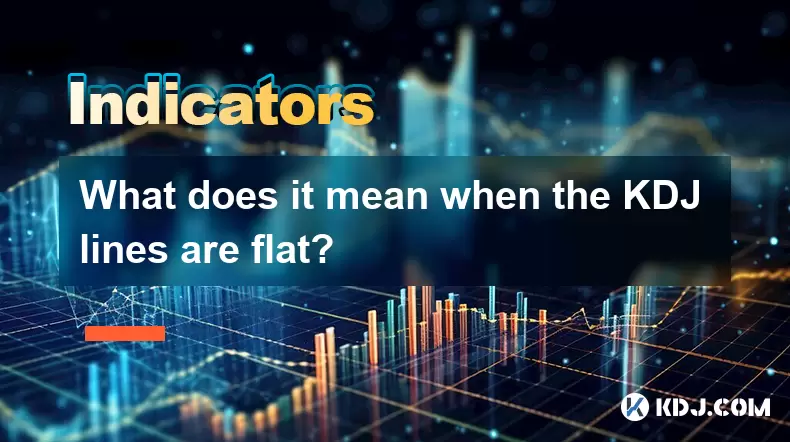
What does it mean when the KDJ lines are flat?
Aug 01,2025 at 03:22pm
Understanding the KDJ Indicator in Cryptocurrency TradingThe KDJ indicator is a momentum oscillator widely used in cryptocurrency technical analysis t...
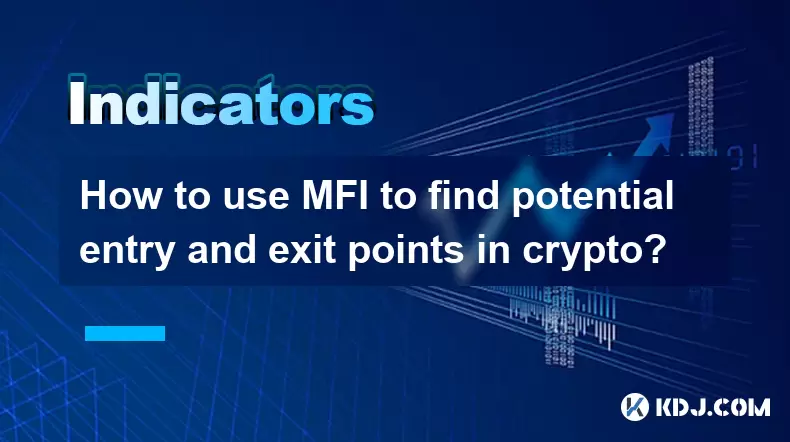
How to use MFI to find potential entry and exit points in crypto?
Aug 01,2025 at 02:35pm
Understanding the MFI Indicator in Cryptocurrency TradingThe Money Flow Index (MFI) is a momentum oscillator used to measure the strength and directio...
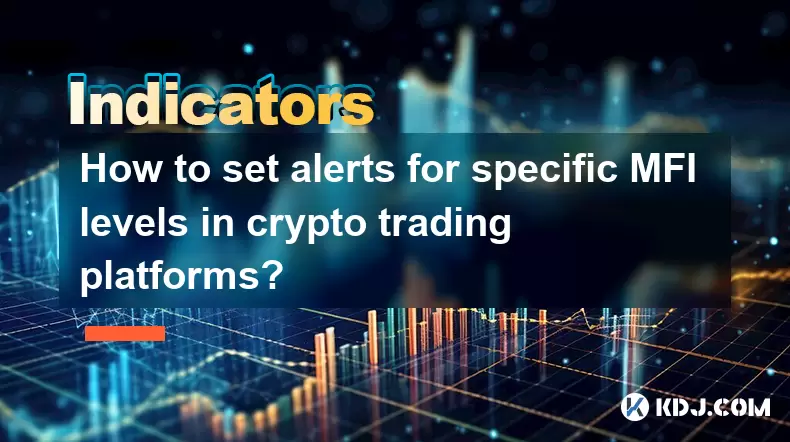
How to set alerts for specific MFI levels in crypto trading platforms?
Aug 01,2025 at 12:42pm
Understanding the Money Flow Index (MFI) in Crypto TradingThe Money Flow Index (MFI) is a momentum oscillator that measures the flow of money into and...
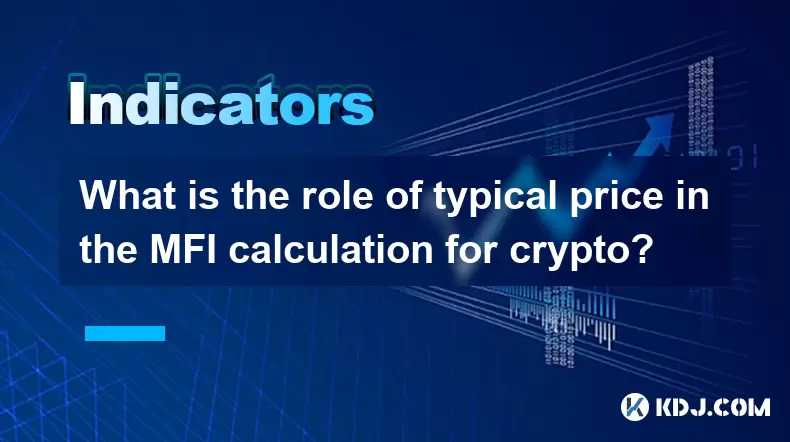
What is the role of typical price in the MFI calculation for crypto?
Aug 01,2025 at 12:21pm
Understanding the Typical Price in MFI for Cryptocurrency AnalysisThe Typical Price plays a crucial role in the calculation of the Money Flow Index (M...

What is the difference in KDJ signal interpretation between a trending and a ranging market?
Aug 01,2025 at 03:56pm
Understanding the KDJ Indicator in Cryptocurrency TradingThe KDJ indicator is a momentum oscillator widely used in cryptocurrency trading to identify ...

Does the KDJ indicator work well for low-liquidity crypto assets?
Aug 01,2025 at 02:01pm
Understanding the KDJ Indicator in Cryptocurrency TradingThe KDJ indicator is a momentum oscillator derived from the Stochastic Oscillator, widely use...

What does it mean when the KDJ lines are flat?
Aug 01,2025 at 03:22pm
Understanding the KDJ Indicator in Cryptocurrency TradingThe KDJ indicator is a momentum oscillator widely used in cryptocurrency technical analysis t...

How to use MFI to find potential entry and exit points in crypto?
Aug 01,2025 at 02:35pm
Understanding the MFI Indicator in Cryptocurrency TradingThe Money Flow Index (MFI) is a momentum oscillator used to measure the strength and directio...

How to set alerts for specific MFI levels in crypto trading platforms?
Aug 01,2025 at 12:42pm
Understanding the Money Flow Index (MFI) in Crypto TradingThe Money Flow Index (MFI) is a momentum oscillator that measures the flow of money into and...

What is the role of typical price in the MFI calculation for crypto?
Aug 01,2025 at 12:21pm
Understanding the Typical Price in MFI for Cryptocurrency AnalysisThe Typical Price plays a crucial role in the calculation of the Money Flow Index (M...
See all articles

























































































